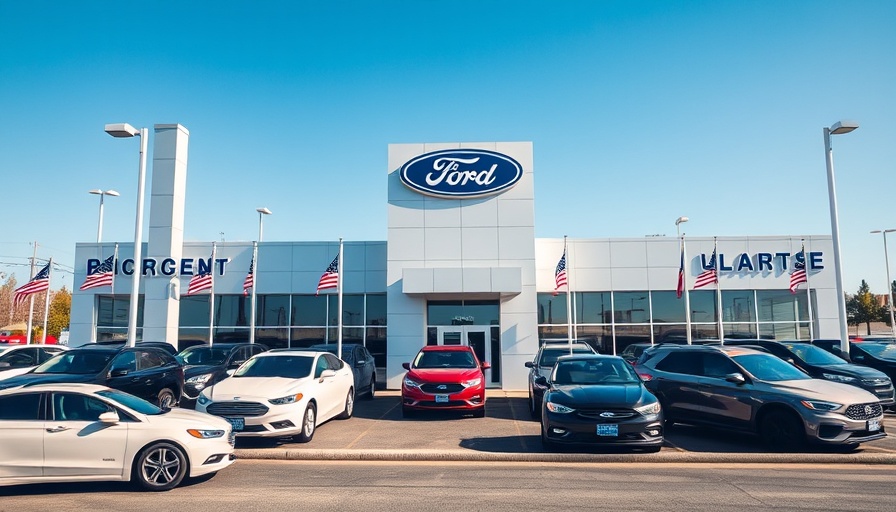
Ford Sales Surge: A Positive Quarter Amid Industry Uncertainty
Ford Motor Company has reported a remarkable sales increase of 14.2% during the second quarter of 2025 when compared to the same period last year, far exceeding industry expectations. With a total of 612,095 new vehicles sold, including impressive gains in F-Series trucks and electrified vehicles, this surge highlights Ford's growing market strength, especially amidst a broader automotive landscape that didn't fare as well.
Understanding the Market Dynamics
The automotive industry is often viewed as a bellwether for the broader economy, and this quarter's data underscores the complexities influencing consumer behavior. Rivals like General Motors (GM) have also reported increases, albeit modestly, with a growth of 7.3%. In contrast, South Korean automakers Kia and Hyundai celebrated their best-ever first-half sales results, revealing an 8% and 10% rise, respectively. This variance in sales growth across automakers indicates robust competition and shifting consumer preferences.
Rise of the F-Series Trucks
Ford's success this quarter can be significantly attributed to the performance of its F-Series trucks, which saw an impressive increase of 11.5%, culminating in total sales of 222,459 units. The popularity of these trucks, which have continuously been the backbone of Ford's vehicle fleet, demonstrates the ongoing demand for reliable pickup vehicles, especially in the current market environment where many consumers seek durability and value.
The Transition to Electrified Vehicles
This surge in sales also comes as Ford continues to pivot towards electrification. During the second quarter, the company sold 82,886 electrified vehicles, marking a 6.6% increase from the same period last year. However, it is critical to note that pure electric vehicle (EV) sales have experienced a 31.4% drop, contrasting with a 23.5% increase in hybrid sales. This divergence indicates an evolving landscape in consumer choices, leaning more towards hybrids as consumers weigh factors like price, availability, and infrastructure against the backdrop of a more comprehensive push for full electrification.
Looking Ahead: What Does This Mean for Ford?
The encouraging sales report arrives amidst cautious optimism in the industry, where forecasters had initially projected new vehicle sales to grow by only 1.7% to 2% for the quarter. Many analysts attribute this upturn to robust sales in early months, despite expected softness in June. As Ford continues to innovate and expand its offerings, especially with upcoming EV models, the brand is positioning itself to capture a significant market share in the rapidly expanding electric vehicle sector.
Consumer Sentiment and Economic Influences
Ford's significant sales growth can also be tied to positive consumer sentiment and economic conditions. Factors such as low unemployment rates, rising wages, and a resurgence in consumer spending buoyed sales in the automotive sector. Additionally, ongoing innovations in vehicle technology, safety features, and fuel efficiency have reignited interest in new car purchases. Ford’s commitment to these advancements positions the automaker favorably among consumers putting a premium on quality and sustainability.
Conclusion: Embracing Opportunity in an Evolving Market
As Ford celebrates an impressive quarter, this news not only reflects the company's resilience but also symbolizes a larger trend within the automotive industry geared towards modernization and sustainability. The engagement and responsiveness to market conditions will be crucial as the auto industry navigates through upcoming challenges and opportunities, especially in a world that is increasingly placing value on environmental responsibility and innovation.
 Add Row
Add Row  Add
Add 




Write A Comment